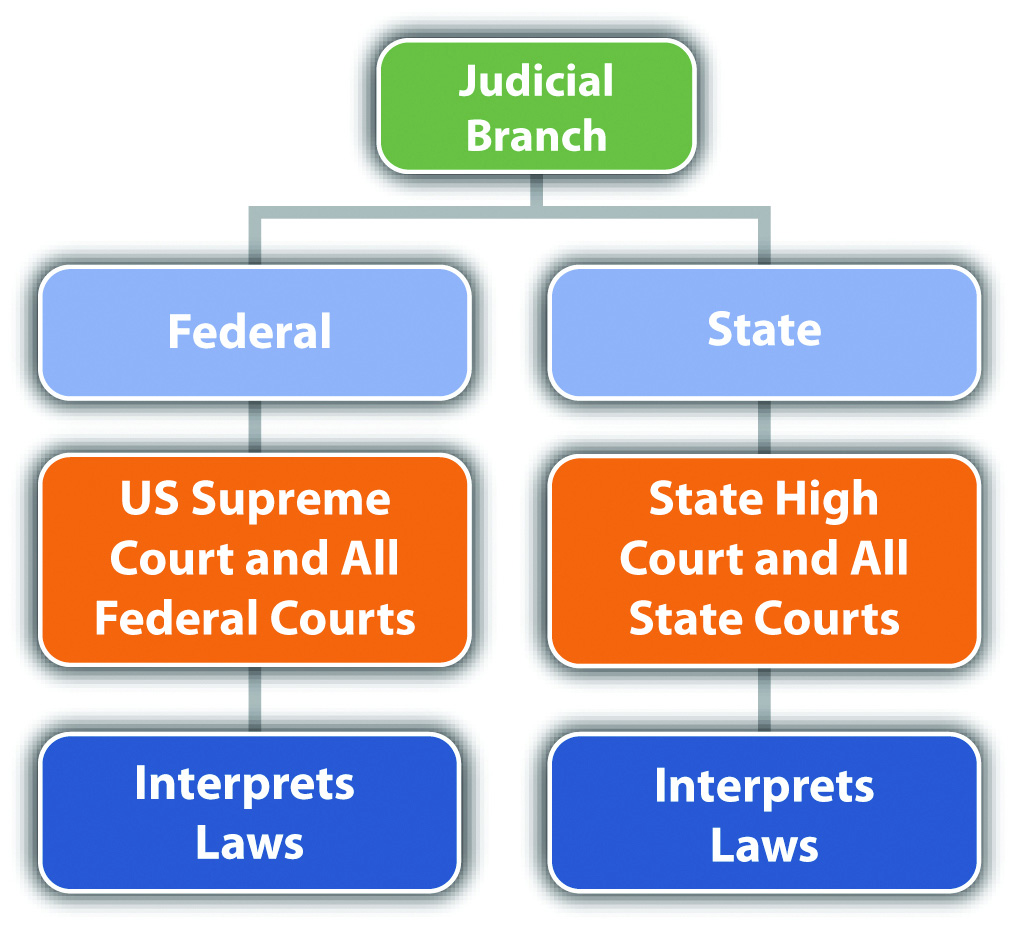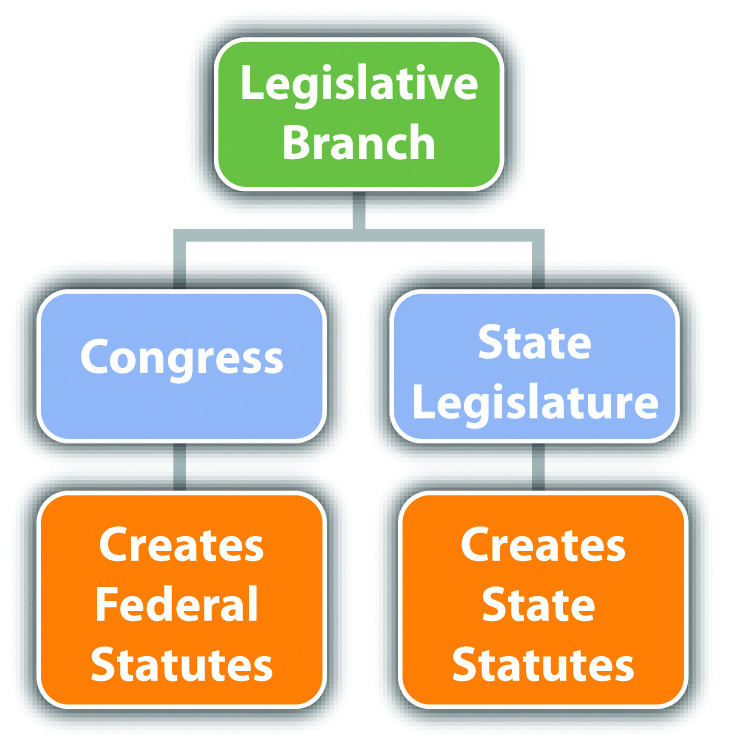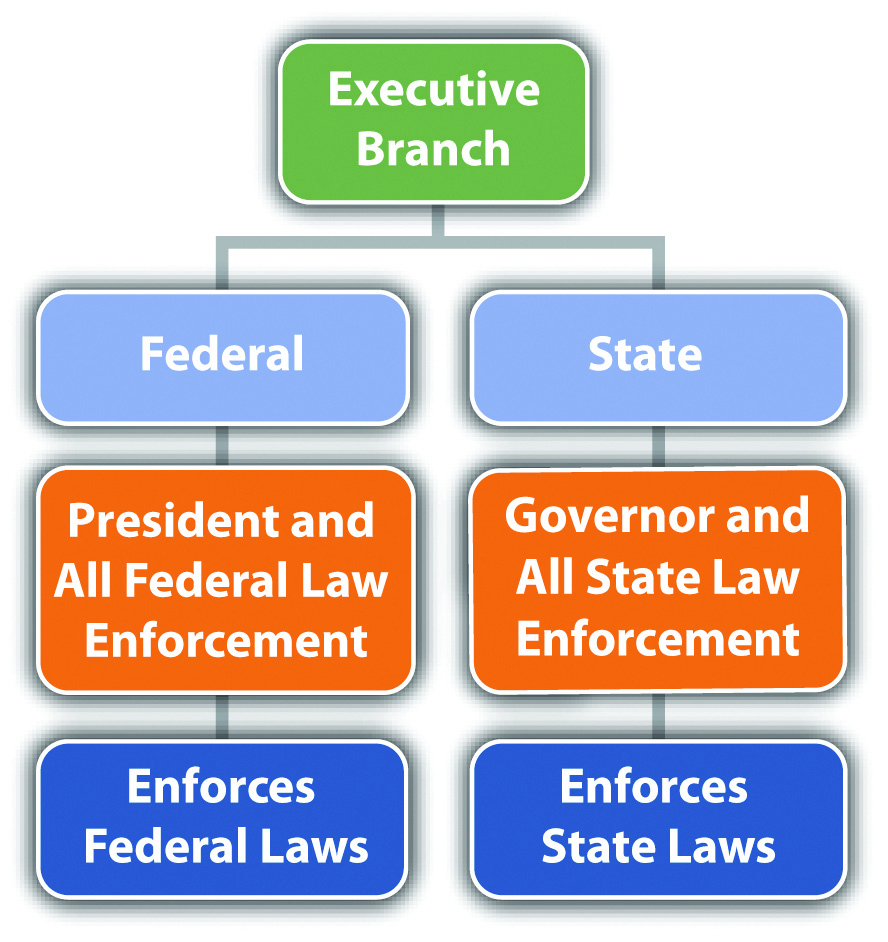The Branches of Government
The federal Constitution was written to ensure that government power is distributed and never concentrated in one or more areas. This philosophy is served by federalism, where the federal government shares power with the states. It is also further served by dividing the government into three branches, each responsible for different government duties and all providing a check and balance on each other. The three branches of government are detailed in Articles I, II, and III of the federal Constitution. The legislative branch, the executive branch, and the judicial branch are co-equal, and each can only exercise those powers granted to it in the constitution. This is called the separation of powers doctrine. While the federal Constitution identifies only the federal branches of government, the principle of checks and balances applies to the states as well. Most states identify the three state branches of government in their state constitution.
Each branch of government has a distinct authority. When one branch encroaches on the duties of another, it violates the separation of powers doctrine. The courts decide whether a particular government branch has overstepped its boundaries because courts interpret the Constitution, which describes each branch’s sphere of influence. Thus the judicial branch, which consists of all the courts, retains the balance of power.
The Legislative Branch
Article I of the US Constitution establishes the federal legislative branch. The legislative branch is responsible for creating statutory laws. Although citizens of a state can vote for some state statutes by ballot (e.g., initiative), the federal legislative branch enacts all federal statutes; there is no federal initiative or referendum power. In the federal government, Congress is the legislative branch. The Alaska State Legislature is Alaska’s legislative branch. Both Congress and the Alaska State Legislature are bicameral, which means they each have two houses. In Congress, this system provides equal representation among the several states and by citizens of the United States. States are represented by the Senate. Every state, no matter how large or small, gets two senators. Citizens are represented by the House of Representatives. Membership in the House of Representatives is based on population. A heavily populated state, like California, has more representatives than a sparsely populated state, like Alaska.
Alaska, like most state legislatures, has a similar structure to the federal system.
Figure 1.1 Diagram of the Legislative Branch
Legislative Branch Checks and Balances
The legislative branch provides both a check and balance to the executive branch and the judicial branch. For example, the legislative branch can impeach the chief executive officer of the executive branch (i.e., the President of the United States or the state Governor) and judges. This is the first step toward removing the chief executive officer from office. As we have seen in recent times, although one house (e.g., the House of Representatives) can pass Articles of Impeachment, it is up to the other house (e.g., the Senate) to convict and order removal. Congress can also enact statutes that supersede judicial opinions, provided the judicial opinion is not based on the interpretation of the constitution. Congress can also create and abolish courts other than the Supreme Court.
The Executive Branch
The executive branch is responsible for enforcing the statutes enacted by the legislative branch. In the federal government, the executive branch is headed by the president of the United States. States’ executive branches are headed by the governor of the state.
Figure 1.2 Diagram of the Executive Branch
Executive Branch Checks and Balances
The executive branch provides both a check and balance to both the legislative branch and the judicial branch. The chief executive officer (i.e., the President of the United States or the state Governor) can veto statutes proposed by the legislative branch. The Chief Executive also has the authority to nominate or appoint justices and judges to the bench. Under the federal system, the president of the United States nominates judges, who must then be confirmed by the Senate. In Alaska, state court justices and judges are nominated by the Alaska Judicial Council and appointed by the Governor. Alaska state court judges serve a specified term before sitting for a retention election.
The judicial branch is responsible for interpreting all laws, including statutes, codes, ordinances, and the federal and state constitutions. This power is very broad and is the basis for judicial review, referenced earlier in this chapter. It allows the judicial branch to invalidate any law that contravenes the constitution. Judicial review necessary includes the ability to interpret the words and phrases contained within federal and state constitutions. When a court interprets the constitution, it is explaining the meaning of its words and phrases. It is important to recognize that legal interpretation acts independently of public opinion. The court interprets the constitution regardless of whether there is national or state consensus on an issue.
The federal judicial branch is headed by the US Supreme Court. Each state’s judicial branch is headed by the highest-level state appellate court. The Alaska judicial branch is headed by the Alaska Supreme Court. Members of the judicial branch include all judges and justices of every federal and state court in the court system.
Figure 1.3 Diagram of the Judicial Branch

Judicial Branch Checks and Balances
The judicial branch provides both a check and balance to both the legislative branch and the executive branch. The US Supreme Court can invalidate statutes enacted by Congress if they conflict with the Constitution. The US Supreme Court can also prevent the president from taking action if that action violates separation of powers. The state courts can likewise nullify unconstitutional statutes passed by the state legislature and void other executive branch actions that are unconstitutional.


